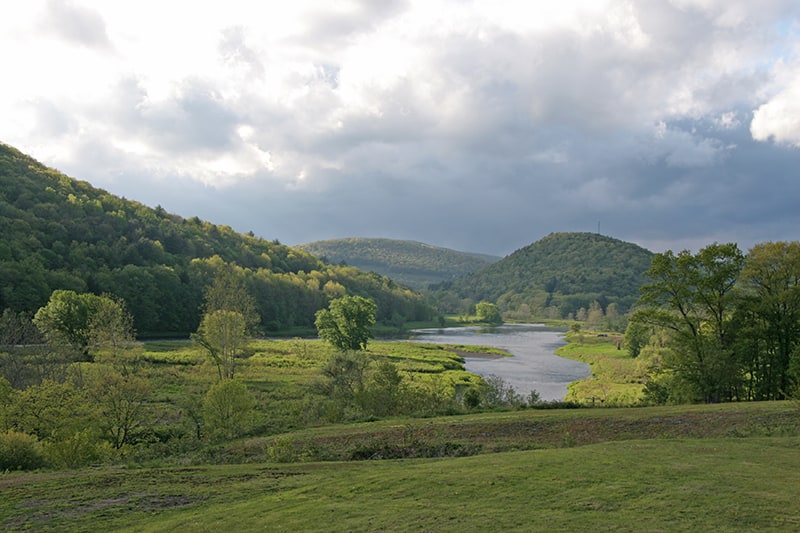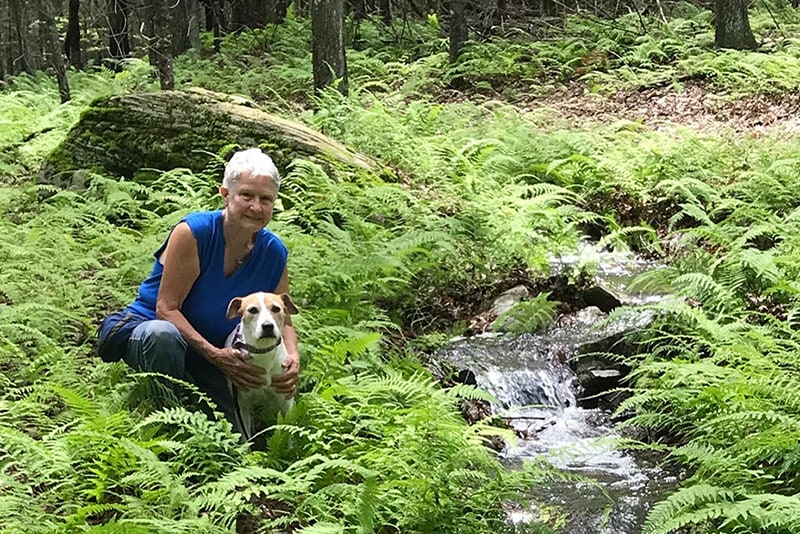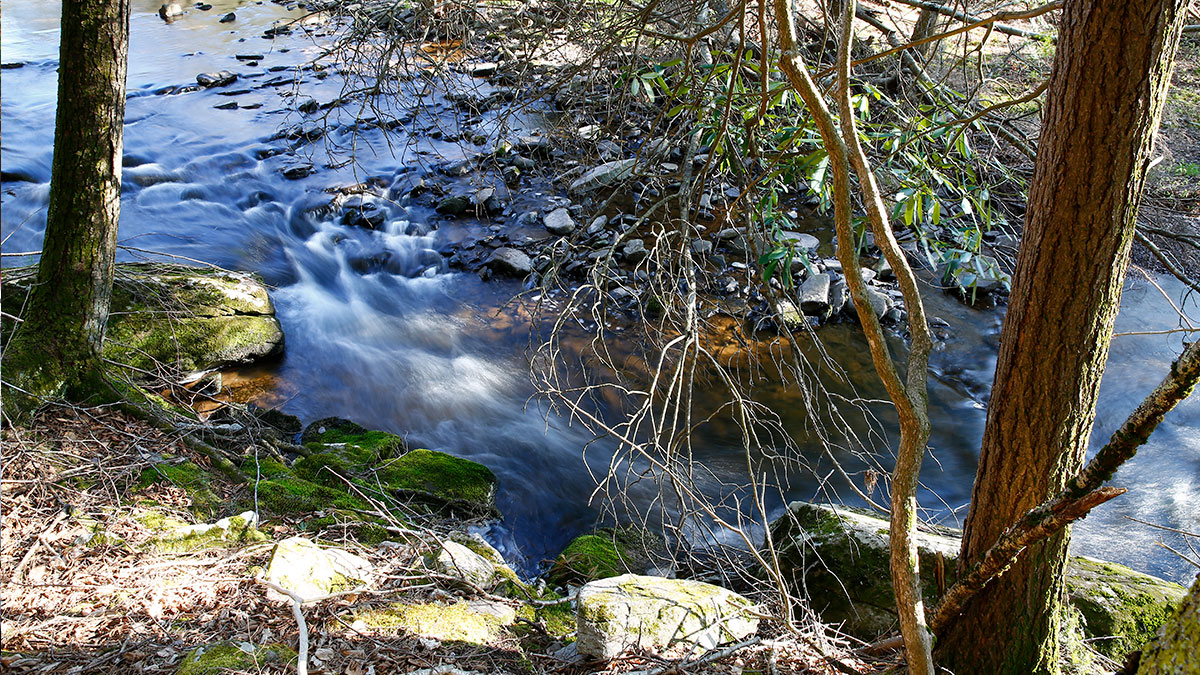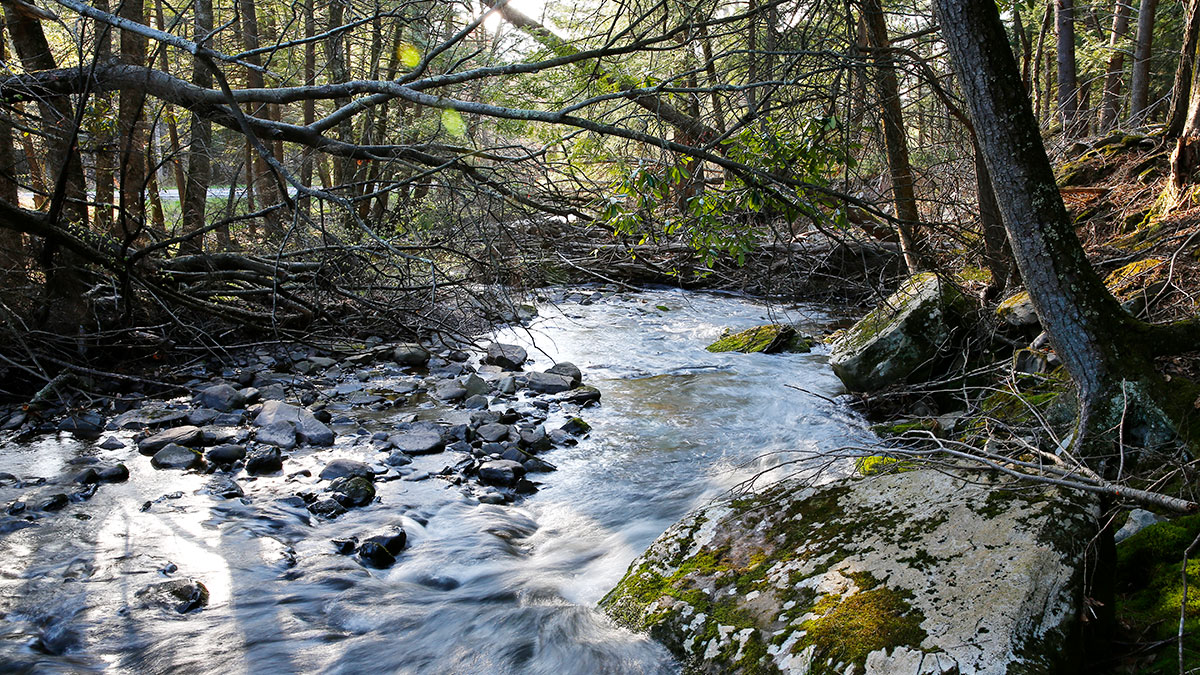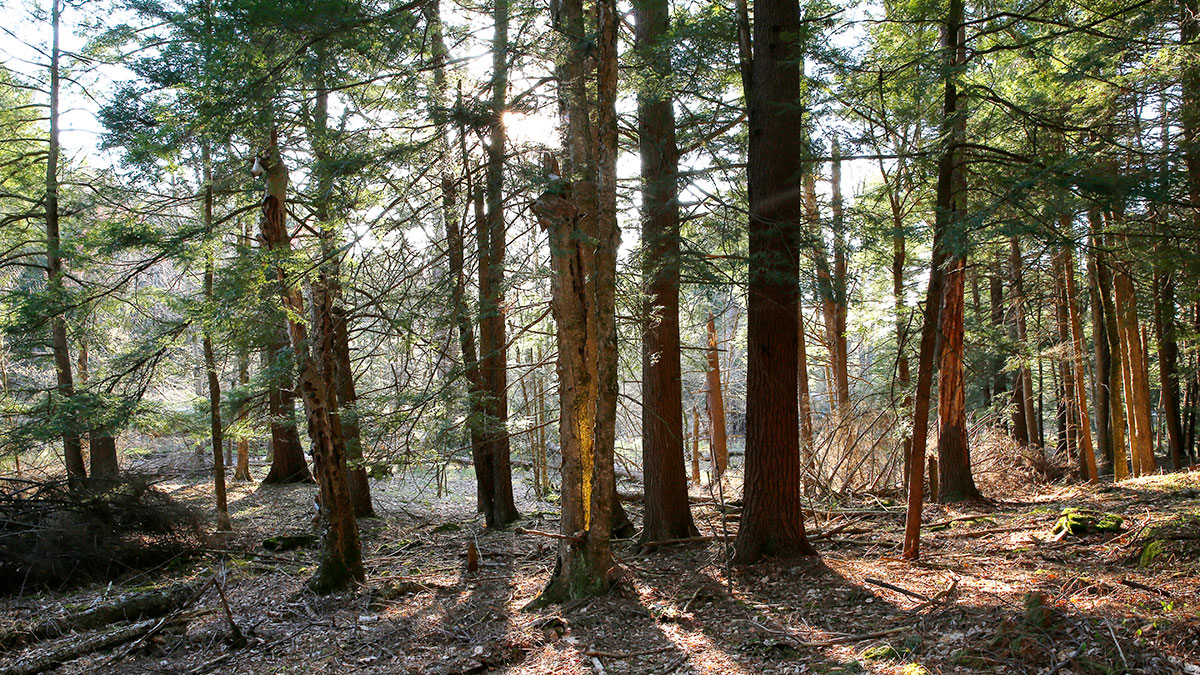Mitchell Pond Brook: “We Are All Connected”
[div id=key-value-images]
[end-div]
Nearly two decades later, Tom’s beloved land in Cochecton, NY—Mitchell Pond Brook—has been protected with a conservation easement and purchased by Helen Beichel, who likewise has fallen for the beautiful waterway that meanders along the 23-acre property near the Delaware River.
Tom had acquired the tract of land on Sullivan County Road 116 in 1965 and lived there in a small cottage, enjoying the forest and the splashing music of the small creek that crosses in front of the cottage.
Tom, who passed away in 2009, never got to see his land protected, but laid the groundwork in his will. “Tom left the Conservancy a generous bequest and left the land to his niece, Mimi Raleigh,” explains Barbara. “Although the easement didn’t come together during his lifetime, Tom talked with us for years and shared that desire with Mimi,” who visited Tom and his woods often.
Mimi’s love for the place grew over the years. “Ever since I was a child, I hoped one day the property would come to me,” she says. When that happened, Mimi thought long and hard about the future of the land.
“He left it to me because he knew I would preserve it,” says Mimi. Yet she realized that living in Westchester County, where she had built a thriving veterinary practice, she would not be able to properly care for it.
After careful consideration, she decided to fulfill more than his wishes by donating the property outright to the Conservancy, which protected it first with a conservation easement before seeking a conservation-minded buyer.
Motivated to begin searching for an escape from the noise pollution of her New York City residence, Helen Beichel came across the property online and made plans to visit. She connected with Barbara and camped at her property along the Delaware River before walking the Sullivan County land that would become hers in December 2012.
Right away, she began to connect with the place. “I really liked the way the cottage was tucked in; the creek was beautiful and there were small red salamanders everywhere,” she says. “Later, I learned that the red-spotted newt is common, but is also a good indicator of healthy habitat.”
A self-described “city person,” Helen began to learn about other natural features of the land, such as the forest types represented there. A blighted American chestnut tree caught her attention, prompting her to join the American Chestnut Foundation. This year, she will plant four chestnut seeds, specially bred to resist chestnut blight, in hopes of restoring chestnuts to the site.
Because the cottage has become structurally unsound, Helen is planning to replace it with “as passive a house as possible,” with features such as passive solar and possibly straw bale construction.
The property has also sparked her interest in Permaculture and led her to take a course with Andrew Faust, an expert with the Center for Bioregional Living (permaculturenewyork.com) who stresses the connection between urban centers like Manhattan and the surrounding countryside as bioregions of interdependence.
“We in NYC are completely dependent on water that comes partly from the Upper Delaware region. Water is the source of life and it’s because of the Conservancy’s protection of land that our water is so pure,” Helen explains. “My land is a part of that. We’re all connected. And we need that connection to the land because it’s also a source of rejuvenation and recreation.”
Of the Conservancy’s role, Helen is pleased to have found a like-minded partner. “It excited me that I would be working with people who had similar goals. For example, the Conservancy wanted a forestry plan and they helped me to find the resources to do so. By working together to preserve this land, my three nieces and generations to come will all benefit from this partnership.”
“We are very grateful that Tom expressed his wishes for the land in his will,” says Barbara. “Long after Tom left this earth, his legacy to us all is reflected in the future care of his beloved land. We are thrilled to see Helen making the connection between her land here and her water quality in New York City while carrying forth her love of place in her own way. It’s thrilling for the Conservancy to play a role in such legacies.”
All photos by David B. Soete.


